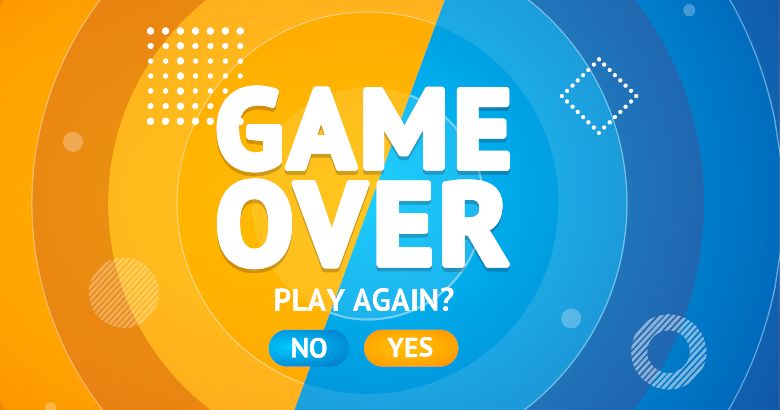
The learning and development profession is changing. The days of expecting a single person to have all the skills needed to design, develop, and deliver effective learning experiences are gone—replaced with a growing importance on collaboration among professionals with diverse and specialized skills. Nowhere is this more emphasized than with creating learning games.
In this article, I explore how learning and development professionals can leverage the collaborative potential of creating learning games. I also highlight strategies for working across professional backgrounds and specializations to create learning games that are both engaging and effective from a learning standpoint.
Why we play games
The fusion of game design and learning is not new. People have been using games for thousands of years to exercise strategic thinking, build social connections, and yes… have fun. One might even argue that the very act of playing games is learning.
In many ways, games provide learning and development professionals a powerful strategy for helping people learn to navigate complex, ill-defined, and risky situations–learning situations likely not well-suited for more instruction-focused approaches.
The secret is people play games to learn—whether they realize it or not.
Games and learning
While the link between games and learning offers great promise for improving learning experiences, the practical application of games for learning is not currently commonly used and wide-spread. There are some important differences between games for learning and games for entertainment markets. The most notable of these is the different business model and value proposition framing these two products.
Designing and developing learning experiences in many organizations is seen on the expense side of the balance sheet whereas games for entertainment are commonly a function of product development that is more sensitive to market competition and rewards. This makes large-scale game productions for learning applications more difficult to realize and scale at a practical level. In most cases, the decision to invest large resources into games for learning is centered on return-on-investment opportunities and managing risk. This has created a space where high production games and simulations are typically used in situations where the risk of experiencing an actual situation is very high (e.g. aircraft simulations, emergency response games) or the resource cost of creating needed learning conditions in real-world contexts outweighs the cost of developing a game environment for learning (e.g. virtual stock market games, virtual welding machines).
Historically, the conditions to invest in large-scale game development for learning have been mostly driven by the business value proposition, not the learning proposition. That being said, there are important situations where the factors and technologies (e.g. Unity) that frame the viability of games for learning becomes approachable in more conventional learning and performance contexts.
Researchers and practitioners have taken a keen interest in the connection between games and learning. Much of this interest is driven by the new capabilities that technology affords for creating immersive and interactive digital gaming experiences. The challenge of creating experiences that empathize learning through play involves the elegant fusion of game and learning design principles, which is something that is rarely taught and practiced at a level or depth that makes the transition to using the strategy in actual learning and development projects difficult.
The practical reality is that creating high-production games for learning is currently outside normal practices for many learning and development teams. While time, budget, talent, and tradition may all influence adoption, one key factor that that likely has an outsized impact is on expanding the creation and use of games for learning is collaboration.
Designing games for learning is a team sport
The roles needed to create and implement effective digital games for learning are expansive. Here are a few key examples:
- Producer
- Content/Story Writer
- Project Manager
- User Experience Designer
- Learning/Instructional Designer
- Subject Matter Expert
- Visual Designer
- Audio Engineering Specialist
- Music Composer
- Acting/Voice Talent
- Game Engine/Platform Developer and Engineer
- Technology Hardware and Infrastructure Specialist
- Learning/Play tester
- Sales and Marketing
While there are similarities to this list for many traditional learning and development teams, developing games for learning requires a sophisticated level of collaboration across a wide spectrum of professionals. Each of these professionals brings with them their own professional language, as well as processes and common practices in their field.
The key to successful collaboration when creating games for learning is to not only be intentional about the design of the game and learning experience itself, but also the process through which this diverse group of professionals works together. This allows the unique expertise to unify into a game strategy that has purpose and designed for supporting learning experiences.
Practical strategies for collaboration
Many great ideas fail not because the idea is bad, but people didn’t understand the idea to fully engage with the value proposition being presented. This is less a challenge with skill and technology, and more with collaboration and communication. In this section, I highlight several promising strategies that learning and development teams can use to design, develop, and scale games for learning.
One of the most pressing practical challenges to expanding the use of games for learning is the exponentially greater levels of collaboration and cost required to coordinate the professionals from diverse backgrounds and skills that are needed. This requires an intentional set of practices and tools to help people share ideas and collaborate towards a common goal.
Create a common design system and language
At LX Studio, we have the privilege of working with teams and organizations at one of the most critical moments in the design of learning experiences. These are when ideas are being generated, strategies developed, and design approaches crafted to meet the needs of learners and organizations. This early-stage innovation is when ideas are most fragile and require careful development. We’ve found an essential ingredient to effective collaboration is having a shared design system and language. This helps create clarity and focus on new ideas and gives teams a pathway to move ideas into action.
Separate ideas from the people who hold the ideas
Adam Steltzner, NASA engineer at the Jet Propulsion n Laboratory, said that to optimize innovation and collaboration on teams, “you’ve got to separate the people from the ideas that people hold. So you love and respect the people, but allow the ideas to engage in a brutal mortal combat where only the strong survive.” Creating the best games for learning is largely based on this same principle where people will bring many different ideas to the table and in the end, the best idea needs to inform the work and outcomes.
Use practical experiments
Designing games, like learning experiences, is at the very basic level a theory of helping people interact with an environment. We can use the vast knowledge and literature about how people learn and experience games; however, design is the process of creating something new. Learning and development teams should constantly be looking for small-scale opportunities to experiment, test, and refine ideas with actual learners. Like creating a business minimum viable product (MVP), learning experiments reduce uncertainty and risk and provides valuable data to inform the creative process.
Getting started with collaboration
There is a robust collection of research, literature, and technology that can help create games for learning. Like many creative projects, the most difficult step is often the first one. To get started, begin by visualizing your ideas for the learning game. (Figure 1) This might include using a whiteboard, visual diagraming tools, a journal, or even the back of a napkin. This process moves your idea from being invisible into a format that people can engage and start collaborating.

Figure 1. Example Canvas for Designing Learning Games


